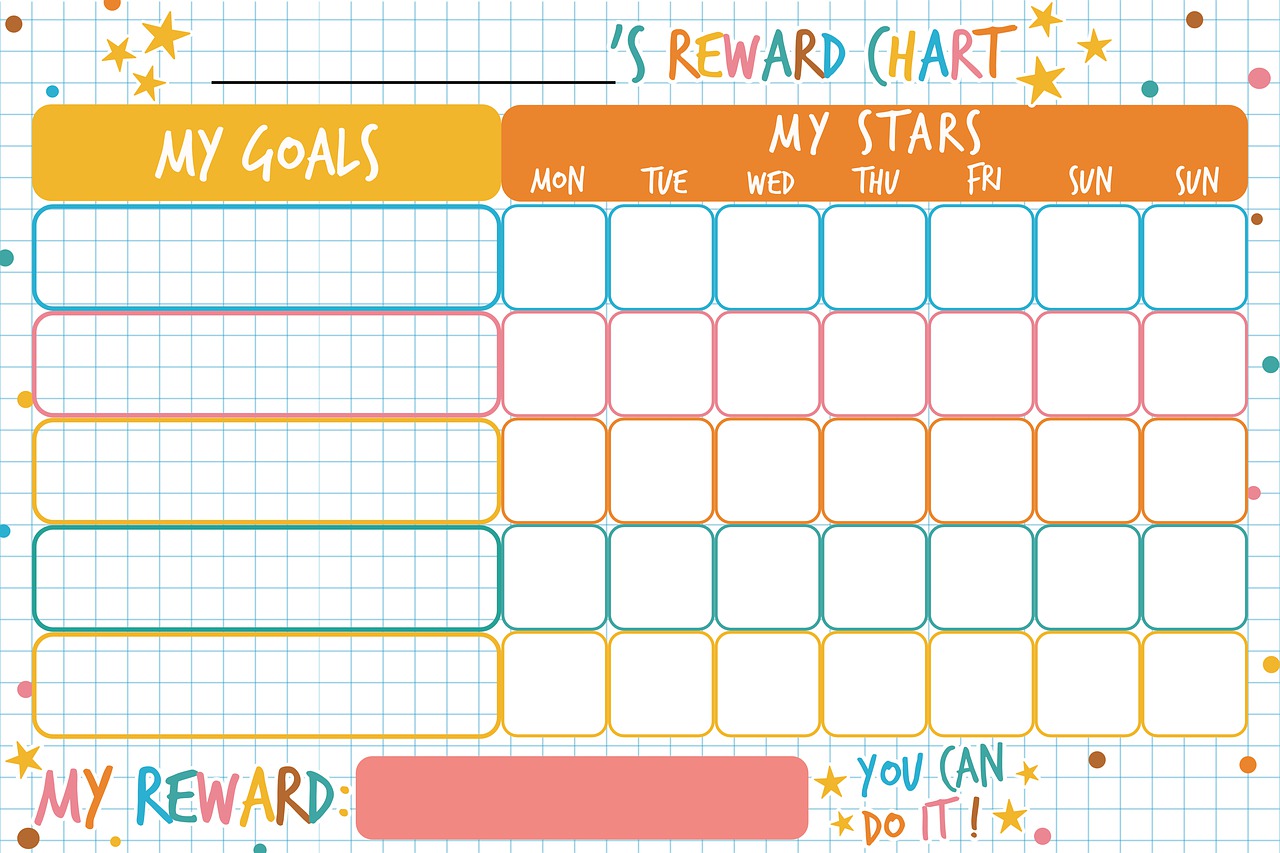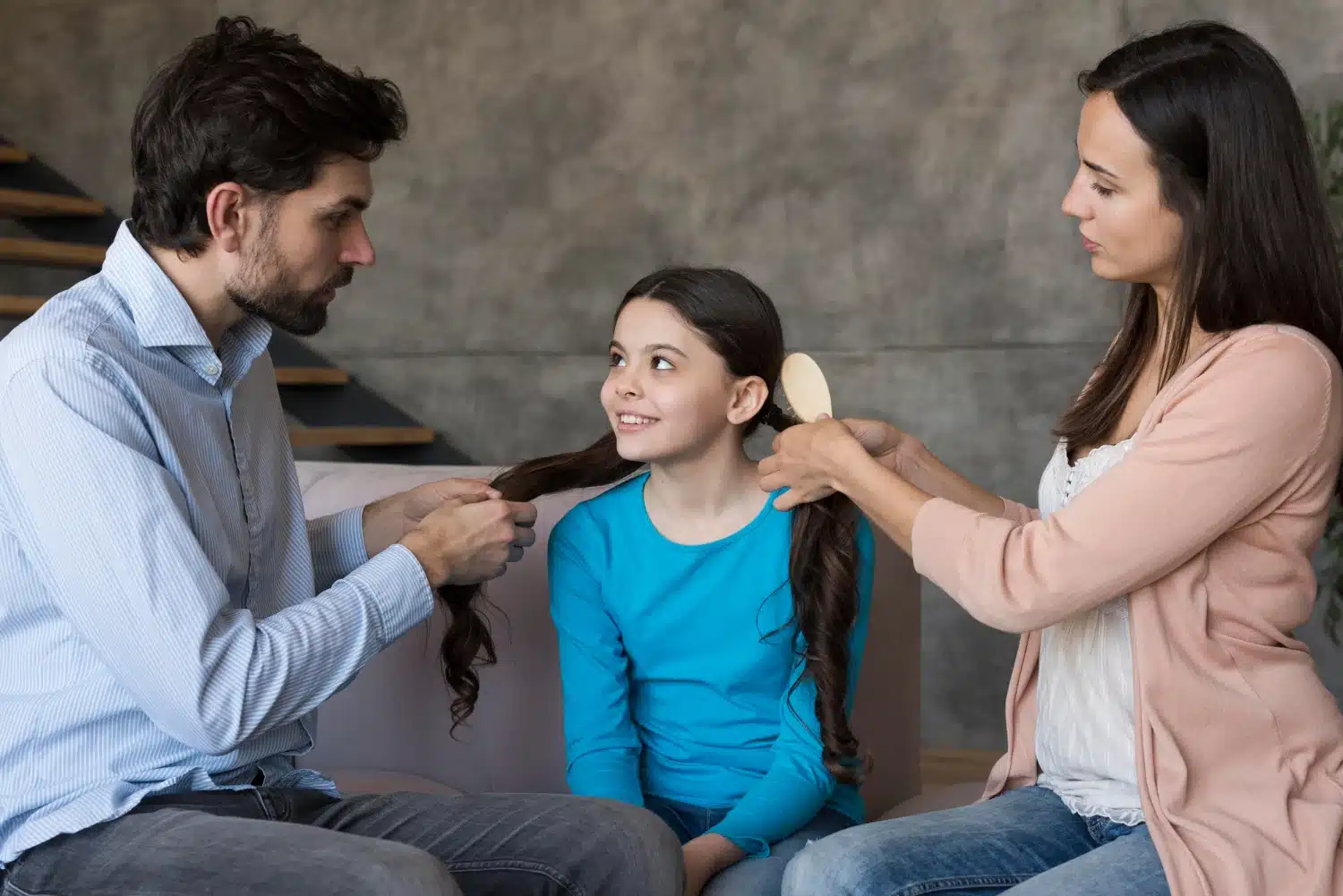As a parent, you want your child to grow up to be happy, responsible, and successful. But how can you encourage good behavior without resorting to harsh discipline techniques? The answer lies in the power of positive reinforcement, specifically through praise and rewards. By leveraging these techniques, parents can help their children develop important life skills and strengthen their bond with their children. This article will explore the power of praise and rewards in discipline kids, the available types, and best practices for using these techniques to help discipline children aged 4 to 12.
What is Positive Discipline (PD)
As parents, one of our most important responsibilities is to raise well-behaved and well-adjusted children. Discipline is an integral part of this process, and Positive Discipline (PD) is an approach that has gained popularity in recent years. PD is a parenting technique emphasizing mutual respect, understanding, and cooperation between parents and children. It involves setting clear boundaries and rules while using positive reinforcement, praise, and rewards to encourage good behavior.
Why PD is necessary for children aged 4-12
PD is especially effective for children aged 4-12, who are in the crucial stage of development where they learn the fundamental principles of behavior and morality. This age group is also highly susceptible to negative peer and media influences, making it even more critical for parents to provide positive guidance and reinforcement.
What is Praise in Positive Discipline
In Positive Discipline (PD), praise is a powerful tool used by parents to reinforce positive behavior in their children. Praise involves using specific, positive feedback that recognizes and supports the behavior or action the child is exhibiting. When used effectively, praise boosts a child’s self-esteem, motivates them to continue positive behavior, and strengthens the bond between parent and child. In PD, parents are encouraged to use praise as a natural consequence of positive behavior rather than as a bribe or a way to manipulate their child’s behavior. With the power of praise, parents can create a positive and supportive environment that encourages children to develop into well-adjusted and confident individuals.
Importance of praise for kids aged 4-12
Praise is essential to positive discipline for children aged 4-12. This age group is in a critical stage of development where they are building their sense of self-worth and self-esteem. When children receive praise for their efforts and accomplishments, it helps to reinforce positive behavior and strengthens their confidence and self-esteem.
Moreover, praise helps children feel appreciated, loved, and valued, which is crucial for their emotional development. Children who receive praise regularly are more likely to exhibit positive behavior, be more confident in their abilities, and feel more connected to their parents.
Additionally, praising children for their efforts and not just their achievements help to cultivate a growth mindset. A growth mindset is essential for children to develop a love for learning, a willingness to take on challenges, and the ability to persevere through complex tasks.
The importance of praise for children aged 4-12 cannot be overstated. It is a powerful tool for parents to reinforce positive behavior, strengthen the parent-child bond, and build a foundation for their child’s emotional and academic success.
The different types of praise and their impact on kids
In positive discipline, parents can use different types of praise to reinforce positive behavior in their children. Every kind of praise has a unique impact on children’s behavior and emotional development.
Specific praise:
Specific praise recognizes and reinforces a particular behavior or action the child exhibits. It is more effective than general praise, as it helps the child understand what they did well. For example, saying “Great job sharing your toys with your brother” instead of “Good job” helps the child understand which specific behavior they did well. Specific praise is more effective in promoting positive behavior in children.
Process praise:
Process praise recognizes a child’s effort and strategies to complete a task rather than the result. For example, saying, “I can see that you worked hard on that puzzle” instead of “You’re so smart” encourages the child to value effort and hard work rather than just natural ability. This praise helps children develop a growth mindset and encourages them to embrace challenges and persevere through difficult tasks.
Social praise:
Social praise recognizes and reinforces positive behavior in social situations, such as sharing, taking turns, or being kind to others. This praise encourages children to develop positive social skills and builds their sense of empathy and compassion.
Self-praise:
Self-praise is a type of praise that children learn to give themselves. It is an essential skill for children to learn as it helps them build their self-esteem and confidence. Encouraging children to praise themselves for their efforts and accomplishments helps them develop a positive self-image and strengthens their emotional well-being.
The impact of praise on children is significant.
Children who receive credit regularly are more likely to exhibit positive behavior, have higher self-esteem, and are more motivated to learn and explore new things. On the other hand, children who receive excessive criticism or no praise at all may develop low self-esteem, lack motivation, and exhibit negative behavior.
Common mistakes to avoid when using praise as a discipline technique
While praise can be a powerful tool in positive discipline, there are common mistakes that parents should avoid when using it. Here are a few:
Insincere praise:
Insincere praise can backfire and decrease a child’s self-esteem. Children are perceptive and can sense when praise is not genuine. Parents should only give praise when it is deserved and specific.
Overpraising:
Overpraising can be counterproductive and make a child dependent on external validation. It can also diminish the value of praise and make it less effective in reinforcing positive behavior.
Focusing only on achievements:
Focusing only on achievements can reinforce a fixed mindset, where children believe their abilities are predetermined and cannot be improved. Instead, parents should focus on the effort and strategies that the child used to achieve their goals.
Using praise as a bribe:
Using praise as a bribe can send the wrong message to children and teach them that good behavior is only rewarded with material possessions or privileges. Praise should be used as a natural consequence of positive behavior, not as a means of manipulation.
Tips on how to use praise effectively
To use praise effectively as a discipline technique, parents should:
- Be specific and genuine when giving praise.
- Use praise as a natural consequence of positive behavior.
- Focus on effort and strategies, not just achievements.
- Use a variety of different types of praise.
- Encourage children to praise themselves.
- Avoid overpraising or insincere praise.
- Praise builds children’s self-esteem and promotes their emotional and social development.
What is the Reward in Positive Discipline?

Rewards in positive discipline (PD) refer to tangible or intangible incentives given to children to encourage positive behavior. Rewards can reinforce good behavior and motivate children to continue making positive choices. They can be as simple as verbal praise or elaborate as a special treat or privilege. Rewards should be used with other PD strategies, such as setting clear expectations, modeling positive behavior, and using natural consequences. When used effectively, rewards can promote a child’s self-esteem, build a positive parent-child relationship, and create a supportive and encouraging environment for the child to thrive.
Importance of Rewards for Kids aged 4-12
Rewards can be a powerful tool in positive discipline for kids aged 4-12. They can motivate children to make positive choices, build self-esteem, and strengthen the parent-child relationship. When children are rewarded for their excellent behavior, they feel valued and recognized for their efforts, boosting their confidence and encouraging them to continue making positive choices.
Rewards can also help children develop a sense of responsibility and accountability. By setting clear expectations and offering rewards for meeting them, children learn that their actions have consequences and that they have control over their behavior. This can help them develop a strong sense of self-discipline and responsibility, serving them well throughout their lives.
Rewards can be a powerful tool for promoting positive behavior, building self-esteem, and strengthening the parent-child relationship. When used effectively and with other PD strategies, rewards can help children develop into responsible, self-disciplined, and confident individuals.
The Different Types of Rewards and their Impact on kids
Many different types of rewards can be used in positive discipline for kids aged 4-12. The impact of rewards on children can vary depending on the specific type of reward and the frequency with which it is given.
Here are some common types of rewards and their potential impacts on children:

Verbal praise:
Verbal praise is a simple and effective reward that can significantly impact children’s self-esteem and motivation. Parents can reinforce positive choices and build a positive parent-child relationship by giving children specific, genuine praise for their excellent behavior.
Tangible rewards:
Tangible rewards are physical rewards, such as stickers, tokens, or small toys, that children can receive for meeting specific goals or expectations. These rewards can be motivating for children and help reinforce positive behavior. However, using tangible rewards sparingly and in conjunction with other PD strategies is essential, as over-reliance on tangible rewards can diminish their effectiveness over time.
Privileges:
Privileges are rewards that give children increased freedom or access to desirable activities or items, such as extra screen time or a special treat. These rewards can motivate children and reinforce positive behavior, but it’s essential to set clear expectations for how privileges are earned and to use them in moderation.
Natural consequences:
Natural consequences are rewards that result naturally from positive behavior, such as feeling proud of oneself for completing a difficult task or feeling a sense of accomplishment for achieving a goal. By helping children connect positive behavior with positive outcomes, parents can help children develop an understanding of intrinsic motivation and self-discipline.
Common Mistakes to Avoid when Using Rewards as a Discipline Technique

While rewards can be a powerful tool for promoting positive behavior in children, parents should avoid several common mistakes when using them as a discipline technique.
Here are a few examples:
Over-reliance on rewards:
If parents rely too heavily on rewards to motivate their children, the child may become less interested in doing the right thing for its own sake and more focused on earning rewards. This can lead to a decrease in intrinsic motivation and self-discipline.
Inconsistent use of rewards:
If parents are irresponsible, their children may need clarification about what behaviors and rewards they can expect. This can lead to frustration and a lack of motivation.
Inappropriate rewards:
Parents should carefully choose appropriate rewards for the behavior they are trying to reinforce. For example, giving a child candy as a reward for finishing their homework may send the wrong message about healthy habits and nutrition.
Unrealistic expectations:
If parents set unrealistic expectations for their child’s behavior, they may become frustrated and discouraged when they fail to meet those expectations, even if they are doing their best.
Tips on How to Use Rewards Effectively
To use rewards effectively as a discipline technique, parents should:
Communicate expectations:
Ensure your child understands the expected behavior and rewards they can receive for positive behavior.
Choose appropriate rewards:
Select rewards that are meaningful to your child and suitable for reinforced behavior.
Use rewards consistently:
Use rewards so your child understands the connection between positive behavior and rewards.
Gradually reduce reliance on rewards:
Over time, gradually reduce your reliance on rewards as your child develops self-discipline and intrinsic motivation.
Importance of Combining Praise and Rewards in PD
While praise and rewards can be practical tools for promoting positive behavior in children, combining these techniques can be even more powerful. When used together, praise and rewards work in tandem to reinforce positive behavior and encourage the development of self-discipline.
Praise helps to build a child’s self-esteem, promoting a positive attitude toward appropriate behavior. By acknowledging and reinforcing positive behavior with praise, parents can help their child feel good about themselves and more likely to continue making good choices.
Conversely, rewards provide an added incentive for positive behavior, reinforcing the idea that good choices are worth making. By offering meaningful rewards for positive behavior, parents can help their child understand the value of good behavior and develop intrinsic motivation to make good choices.
By combining praise and rewards, parents can create a positive feedback loop that reinforces good behavior and helps their child develop self-discipline and a positive attitude toward appropriate behavior.
Best practices for connecting praise and rewards
When using praise and rewards as part of a positive discipline strategy, connecting the two techniques meaningfully is important. Here are some best practices for connecting praise and rewards effectively:
Communicate expectations:
Ensure your child understands the expected behavior and rewards they can receive for positive behavior. This will help them connect the dots between good behavior, praise, and rewards.
Reinforce behavior with praise:
Use praise to reinforce positive behavior immediately after it occurs. This helps your child understand desirable behaviors and encourages them to make good choices.
Select appropriate rewards:
Choose rewards that are meaningful to your child and appropriate for reinforced behavior. This will help your child understand the value of good behavior and encourage them to make good choices.
Connect rewards to specific behaviors:
Ensure the reward is directly tied to reinforced behavior. This helps your child understand why they are receiving the reward and reinforces the idea that good behavior is worth making.
Use rewards consistently:
Use rewards so your child understands the connection between positive behavior and rewards. This helps them develop intrinsic motivation to continue making good choices.
Gradually reduce reliance on rewards:
Over time, gradually reduce your reliance on rewards as your child develops self-discipline and intrinsic motivation. This enables your child to understand that making good choices is essential and not just for receiving a reward.
Use praise and rewards in combination:
Use praise and rewards together to create a positive feedback loop that reinforces good behavior and encourages your child to continue making good choices. For example, praise your child for completing their homework on time and reward them with extra playtime.
Be consistent and patient:
Changing behavior takes time, so be patient and consistently use praise and rewards. Over time, your child will develop positive habits and intrinsic motivation to continue making good choices.
Common mistakes to avoid when combining praise and rewards as a discipline technique
While combining praise and rewards can be a powerful tool in positive discipline, it’s essential to be mindful of common mistakes that can detract from their effectiveness.
One common mistake is to over-rely on rewards and praise, which can lead to a situation where the child only behaves to receive rewards or praise rather than developing an intrinsic motivation to do the right thing. Another mistake is to give rewards or praise inconsistently, which can confuse the child and make them uncertain about what they need to do to earn a reward or praise.
It’s also important to avoid using rewards or praise to manipulate or control the child, as this can create a negative dynamic and erode trust between the parent and child. Finally, it’s essential to tailor the type and frequency of rewards and praise to the child’s personality, and needs, as what works for one child may not work for another.
By being mindful of these common mistakes, parents can effectively combine praise and rewards to foster positive behavior and help their child develop a sense of intrinsic motivation and responsibility.
Conclusion
Positive discipline, which incorporates praise and rewards, is a powerful tool for parents seeking to foster good behavior in their children aged 4 to 12. Praise and rewards can help children develop a sense of intrinsic motivation, responsibility, and self-esteem and can reinforce positive behavior in an effective and nurturing way. However, to use these techniques effectively, parents must be mindful of common mistakes, including over-reliance on rewards and praise, inconsistent use, and using these techniques to manipulate or control the child. With these considerations, parents can use credit and rewards to help their children grow and thrive.
Happy Parenting!
You Might Also Like:








